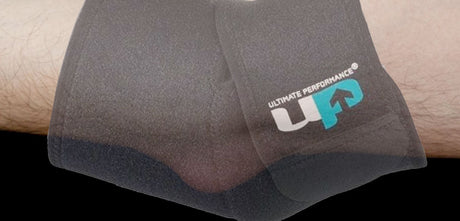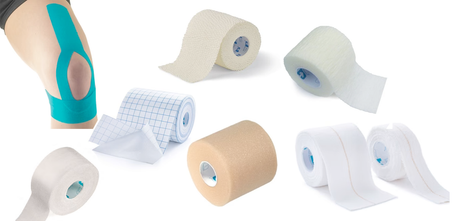When choosing between nitrile and latex disposable gloves for sports first aid, it's essential to consider factors like allergies, durability, and intended use. Both types of gloves have their advantages and disadvantages.
Nitrile Gloves

Nitrile gloves have the following advantages over Latex:
Allergy-Friendly
They are an excellent choice for individuals with latex allergies because they are latex-free. Latex allergies cause skin irritation or, in severe cases, more significant allergic reactions.
Strength and Durability
Disposable Nitrile gloves are generally more puncture-resistant and durable compared to latex. Therefore, they provide a higher level of protection against bloodborne pathogens and other contaminants.
Chemical Resistance
They are resistant to a broader range of chemicals and solvents, making them suitable for situations where exposure to chemicals or hazardous materials may be a concern.
Fit and Comfort
Nitrile gloves provide a comfortable and snug fit, similar to latex. They are available in various sizes to accommodate different hand sizes.
Powder-Free Options
Many nitrile gloves are available in powder-free versions, which reduce the risk of allergic reactions and skin irritation caused by glove powder.
Latex Gloves
These have the following benefits:
Natural Feel and Sensitivity
They offer excellent tactile sensitivity and a natural feel, which can be beneficial when performing delicate tasks or procedures, such as wound care.
Cost-Effective
Latex are often more cost-effective than nitrile gloves, which can be essential for organisations with budget constraints.
Biodegradable
Latex gloves are biodegradable and more environmentally friendly. Nitrile gloves are not biodegradable.
Disadvantages of Latex disposable gloves
However, it's important to note that there are some disadvantages. These include:
Allergy Concerns
Latex allergies are relatively common, and exposure to latex can lead to skin reactions, respiratory problems, or anaphylactic shock in severe cases. For this reason, many healthcare settings and organisations have moved away from latex.
Reduced Chemical Resistance
Latex gloves are not as resistant to chemicals as nitrile gloves, so they may not be suitable for certain situations where chemical exposure is a concern.
Conclusions
In general, if there are no latex allergies among the individuals who will be using the gloves, latex can be a suitable and cost-effective option for first aid. However, if there is a risk of allergies or if you need more durability or chemical resistance, nitrile gloves are the safer choice. Always consider the specific needs and circumstances when selecting gloves for first aid, and ensure that they meet the requirements for the intended use.










